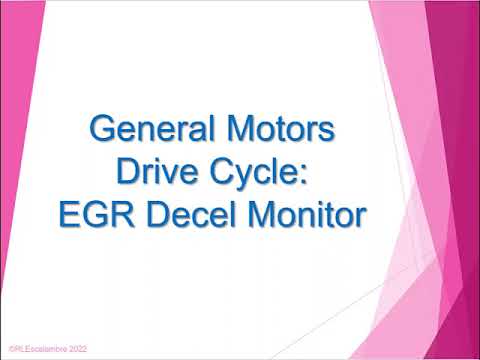General Motors Pattern 1 - Cruise CAT Monitor
Topics in this section include:
- Drive Cycle Pattern 1
- Drive Cycle Procedures
- Drive Cycle Catalyst Monitor without EVAP video
- Drive Cycle EGR Monitor under deceleration video
- Drive Cycle EVAP 0.040" Monitor at cruise video
1. This pattern should be used for many GM vehicles starting in 1996. It represents the vehicles that run the Catalyst monitor tests at cruise. It is possible to run the vehicle at a steady cruise to complete the Oxygen sensor and Catalyst monitor tests first and then run the EGR monitor tests.

2. The steps listed pertain to the pattern shown above. NOTE: Depending on the startup engine temperature, vehicle speed, and engine load, these steps can run out of order.

3. This video shows the Catalyst monitor tests running to completion at cruise in steps 9 - 10 in the above pattern. If the O2 or CAT readiness flag(s) is the only flag(s) not set, warm up the engine and follow this part of the pattern. It was edited to exclude a couple of minutes of steady cruise. Note: Some enable criteria are shown on the scan tool at the top of the screen. The readiness flag status for this drive cycle is not displayed on the screen.
4. This video shows the EGR monitor tests running to completion after multiple decelerations. If the EGR readiness flag is not set, warm up the engine and follow steps 1 - 8 in the above pattern. While watching the video, look closely at the PIDs used to count EGR samples. When the vehicle is accelerating, the system is in non-readiness mode. When the vehicle is decelerating, the system is in readiness mode. Note: Some enable criteria are shown on the scan tool screen. The readiness flag status for this drive cycle is not displayed on the screen.
5. This video shows the EVAP 0.040" monitor tests running to completion at steady cruise after a Cold Soak startup. While watching the video, look closely at the PIDs used to monitor the system for leaks. Note: The actual monitor test is being performed, and the test result is displayed in the middle of the screen below the PIDs. The readiness flag status for this drive cycle is not displayed on the screen.


